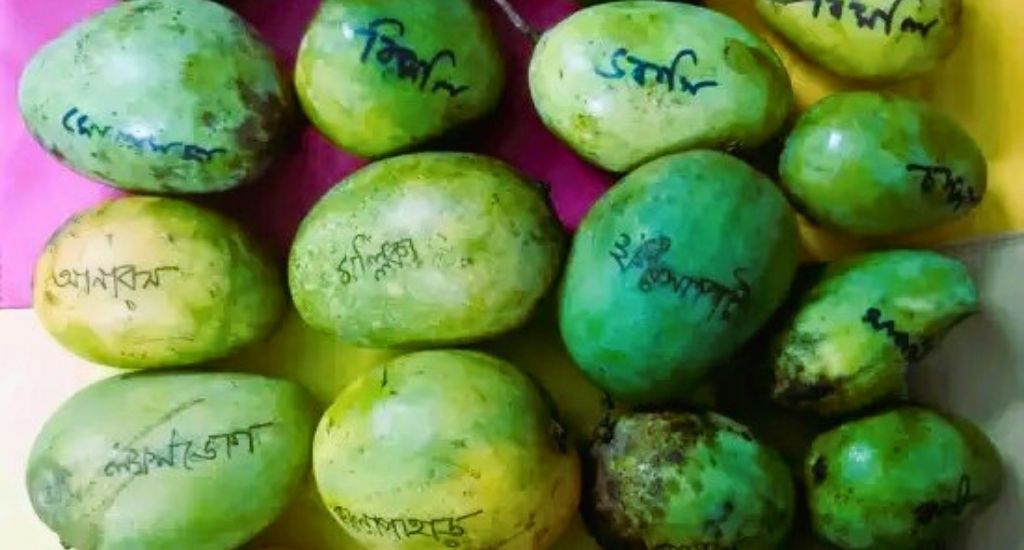
Bengal farmer on ‘mission mango’ to save the fruit
A passionate farmer is making all efforts to save the disappearing diversity of mangoes in Murshidabad, which once boasted of nearly 200 local varieties.

A passionate farmer is making all efforts to save the disappearing diversity of mangoes in Murshidabad, which once boasted of nearly 200 local varieties.
The mango season may have waned in most parts of India. However, the king of fruits never loses flavour in a corner of West Bengal where Kushal Ghosh, fondly known as a “custodian farmer”, has been working to preserve the legendary but endangered ‘Murshidabad mangoes’.
Deeply passionate about gardening, the 74-year-old stoutly built man has devoted himself to conserving nearly 200 local mango varieties on his 36-bigha (around 12 acres) orchard-cum-nursery in Jiaganj, about 11km from the town of Murshidabad.
His journey began in the early 1980s when he realised that local varieties were slowly disappearing from Murshidabad.
“This made me think a lot and I started visiting old orchards in Murshidabad and Malda. I would return either with plants or scions to conserve them on my 14-bigha mango orchard,” he said.
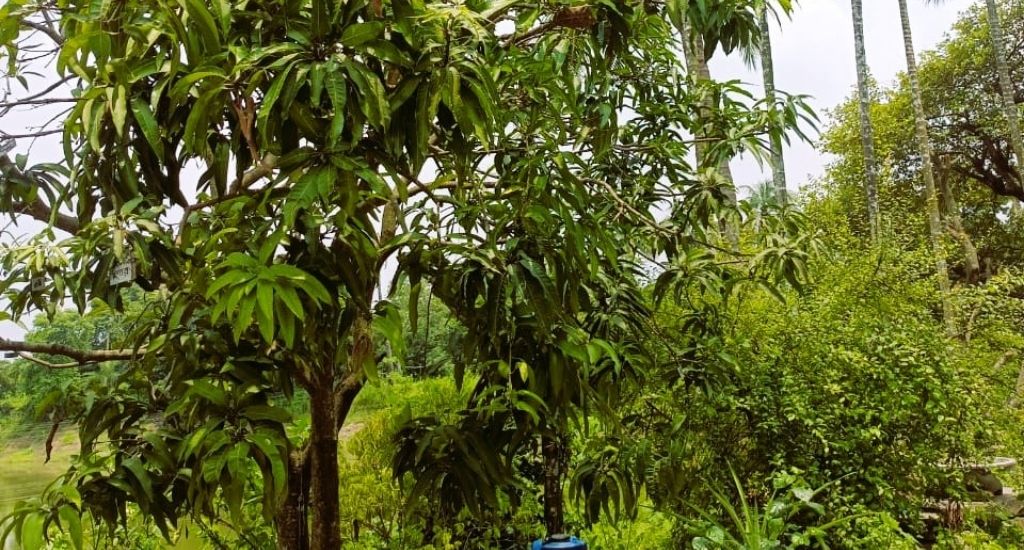
In 2016, Ghosh received training from the local horticulture officer on how to grow multiple mango varieties on the same tree through grafting. He hasn’t looked back since.
During the fruiting season, his orchard attracts a steady stream of visitors who come to marvel at two trees — one bearing 165 varieties of mangoes in an array of colours and shapes, and the other with 100 varieties.
Also Read: A juicy outcome for Maharashtra mango farmers
While other mango growers often guard their collections zealously, Ghosh is a champion of propagation. He shares seedlings from his cherished varieties. “It’s during Shravan (July to August) that discerning mango growers flock here,” he said.
In a landscape where family orchards have given way to paddy fields and houses, and where farmers are increasingly abandoning traditional mango varieties for a handful of commercial cultivars due to changing consumer preferences, Ghosh’s farm stands as a sanctuary.
The history of Murshidabad and its mangoes weaves a tapestry that dates back to Nawab Murshid Quli Jafar Khan. In 1704, he transferred his capital from Dhaka to Murshidabad and encouraged the establishment of mango orchards in Azimganj and Jiaganj, collecting seedlings from various parts of the country.
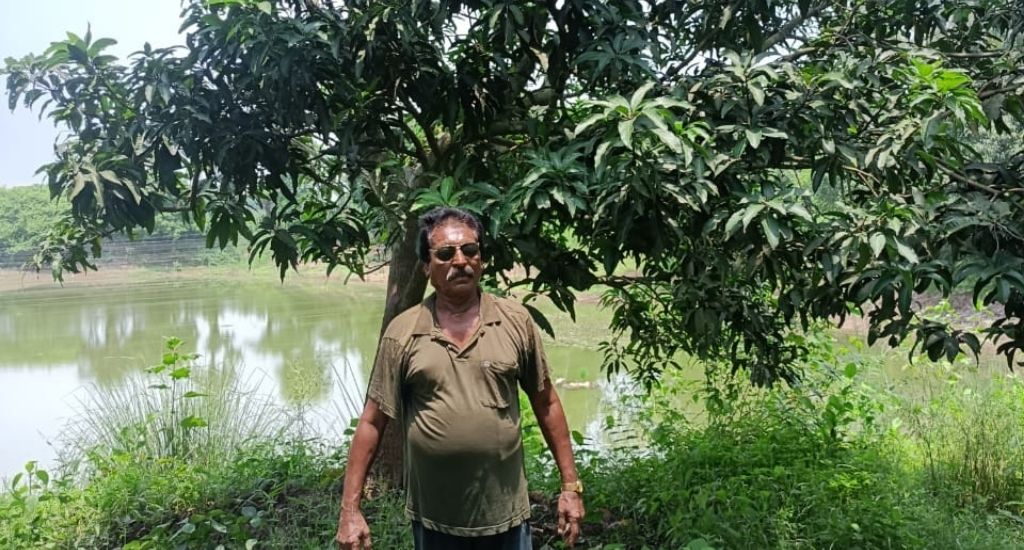
Mango orchards flourished under his successors until the fall of Nawab Siraj-ud-Doula in the Battle of Plassey in 1757, marking the onset of the British colonial era.
“Murshidabad was once famous for its mangoes, and historical records indicate that it was home to around 200 varieties,” said Sanjay Doogar, vice president of the Murshidabad Heritage Development Society.
For the uninitiated, here’s a delightful bouquet of Murshidabad mangoes: Ranipasand, named after the nawab’s favourite wife; Enaet Pasand, named after a jagirdar who patronised it; Bimli, in honour of a maid employed by Mir Jafar; Anaras, for its pineapple-like flavour; Saranga, dedicated to the sarangi players in the nawab’s haveli; Gulabkhas, with a subtle rose fragrance; Mohanbhog, offered to Lord Krishna; Peyarafuli, with a guava-like flavour; Kishanbhog, known for its soft, creamy texture with hints of pineapple; and Chandankosa, which carries a soothing sandalwood fragrance.
Pradip Chopra, author of Things You Can Do With Murshidabad Mangoes, said the nawab’s administration even had a research centre for developing new mango varieties. To alter the fruit’s character, seeds were soaked in fruit juice, rosewater and herbal extracts.
Also Read: Producers of sweet mangoes feel bitter about losses
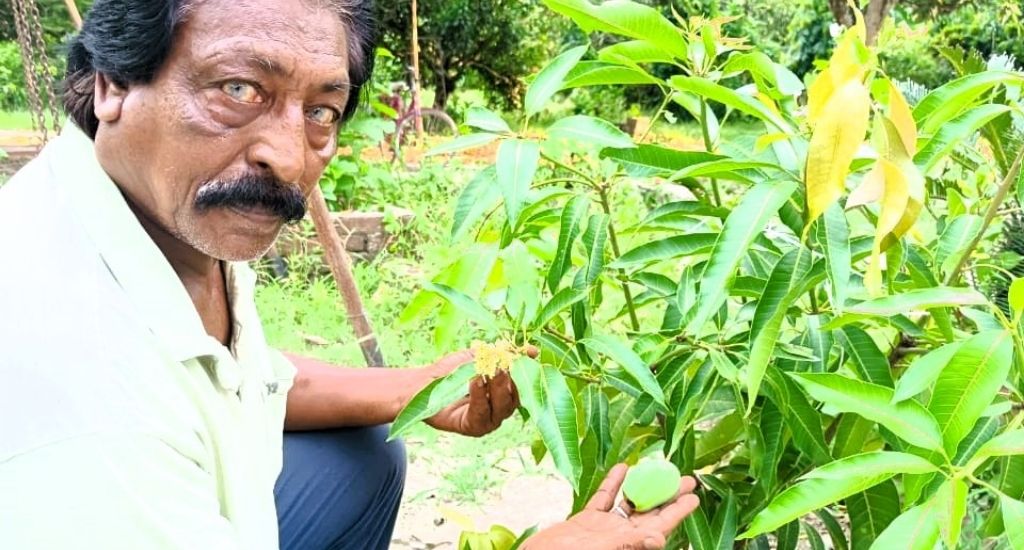
Another variety called Kohitur has been patronised by the Sheherwali Jains — the Oswal Jain families that migrated from Rajasthan and settled in and around Murshidabad. With just 25 to 30 Kohitur mango trees left, the limited produce fetches premium prices due to its rarity.
Botanist Mitu De, associate professor at Kolkata’s Gurudas College, underscored the critical role farmers like Ghosh play in conserving rare varieties, serving as local guides, sharing good practices and providing scions and traditional knowledge associated with the tropical fruit.
“The mango germplasm in Murshidabad and Malda is under severe threat due to several factors,” said De, who has established a Field Gene Bank with 25 traditional mango varieties on her college campus.
Ghosh’s mission extends beyond preserving Murshidabad mangoes. He aims to create new hybrids through cross-breeding. Employing age-old techniques, such as using plant extracts and colour, he has developed 13 new hybrids. These include Totasinha (male Totapuri and female Asinha), Belchampa (male Mulamjam and female Champa, Lango (male Langda and female Bombayia), Champarani (male Rani and female Belchampa), Chausasundari (male Chausa and female Badosindhu), Belatur (male Kohitoor and female Belchampa), and more. Despite being produced in limited quantities, his hybrids are in high demand, with a single seedling priced at Rs 450.
“Most of my hybrid seedlings are sold through word-of-mouth publicity. In the coming years, I plan to introduce more after having studied the results of my creations,” Ghosh said.
Also Read: Garden in Thar desert stays green despite climate crisis
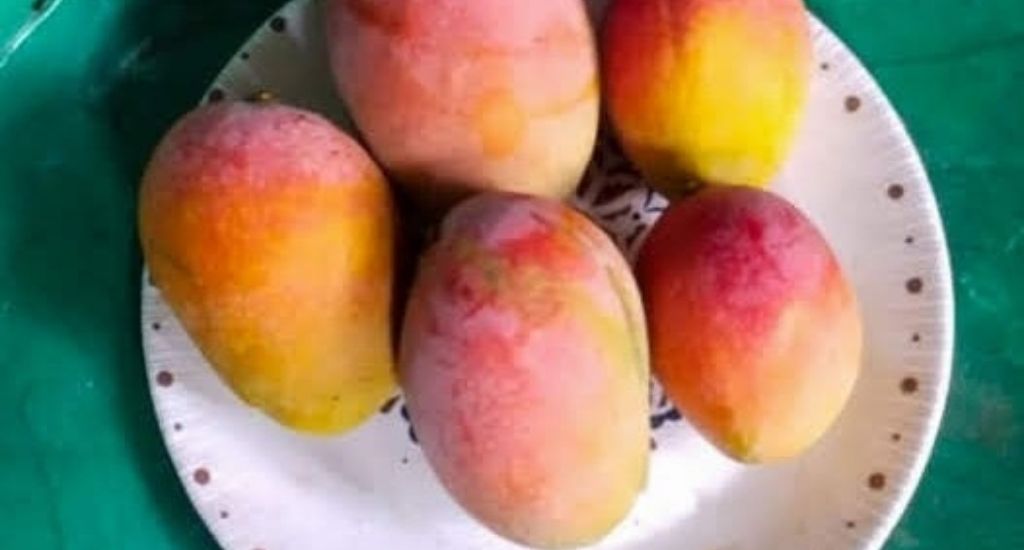
Ghosh’s dedication has earned the admiration of Pradip Kumar Ray, an agronomist based in Kolkata. Ray, who works among Brahmi growers on Sagar Island, said: “His labour of love should be recognised. It’s similar to the efforts of Karnataka’s Syed Ghani Khan, who conserved 116 mango varieties from the era of Tipu Sultan. Khan’s varieties have been registered with the National Bureau of Plant Genetic Resources.”
What is Ghosh’s favourite mango? His eyes light up as he speaks of Lakhan Bhog, a regular bearer with an attractive colour, excellent fruit quality and great export potential. “Then, there’s Saranga, a prolific bearer with a fusion of mango, pineapple and strawberry flavours. Its fragrance is so enchanting that one might wish to turn it into perfume,” he said.
The lead image at the top shows some of the mango varieties grown in Murshidabad, West Bengal (Photo taken with permission from moha-mushkil.com)
Hiren Kumar Bose is a journalist based in Thane, Maharashtra. He doubles as a weekend farmer.